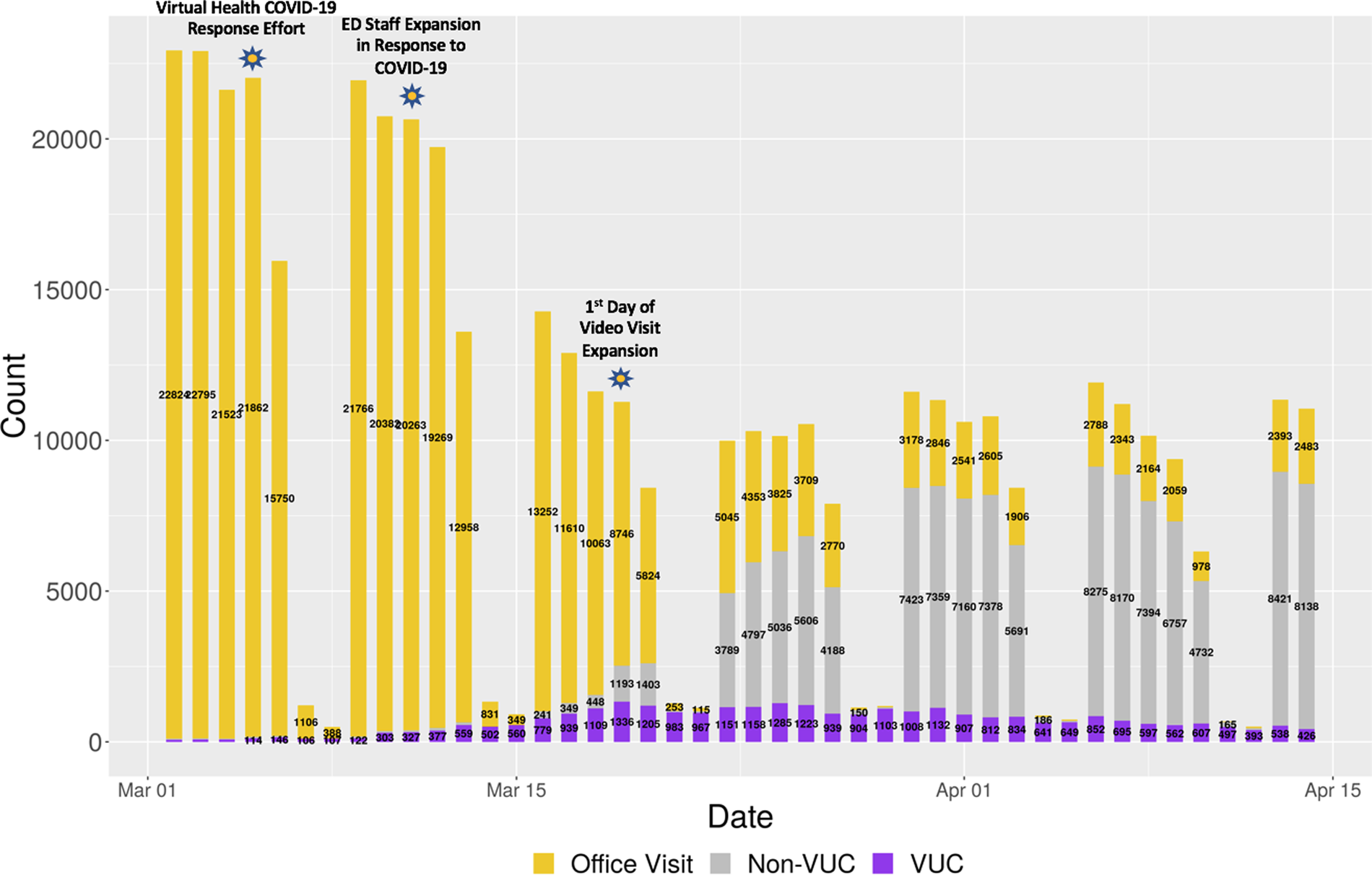COVID Kickstarted Telemedicine Adoption With 4,000% Growth
September 13th, 2020
In 2019, telemedicine was used by less than 10% of Americans. Until then, it wasn’t as popular because most people felt unsure of how to use technology for a doctor’s appointment and quite frankly, didn’t feel the need to replace in-person visits. Regardless, the concept of telemedicine was slowly growing, but the rise of COVID-19, really propelled its widespread use.
One US study held at NYU Langone Health (NYULH), a New York City based healthcare system, collected data from their electronic healthcare record (EHR) system from January to April. The goal was to see how many visits were related to COVID, based on matching related key words (ie. COVID, fever, cough etc.) These visits were then divided into either urgent care or non-urgent care visits.
It was found that virtual urgent care (VUC- purple) numbers increased by over 600% and non-urgent visits (non-VUC- grey) grew by over 4000% (graph below). From March 4th to 19th alone, the amount of telemedicine urgent care visits increased over 16-fold, especially those around 20-40 years old.

There was a substantial increase in those even older than 40 (see table), where it might be assumed that those who are older might have a harder time with the technology associated with virtual care use.

The increased use of telemedicine was seen not only in patients, but medical providers as well. Within the span of 6 weeks, over 150 000 virtual care visits were conducted, with <100 000 of them being unique patients and <2500 unique medical providers.

Interestingly, despite this exponential uptake of telemedicine, the satisfaction of patients remained unchanged. Telemedicine proves to have great benefits, especially during a global pandemic. Since there was a marked turnover of virtual care visits, specifically in the urgent care setting, there was an increased capacity in the emergency room for those who needed it most. For non-urgent care, the increase in telemedicine proved its ease of use, overall satisfaction amongst patients and endorsing of social distancing, one of the limited available interventions against COVID. This transition to telemedicine is also spurring creativity in the way visits are being held and staff is being assigned.
Telemedicine decreases as in-person visits return
Though telemedicine showed great potential during the rise of the coronavirus, numbers have started to decrease as in-person visits become more available. Certain downsides to virtual care also lead to this decline. Due to the fear of contracting the virus, virtual visits may have increased, but some people have forgone being seen by their doctors completely. This can be problematic for those with chronic conditions who need regular check-ups and monitoring. Certain specialities also require parameters that cannot be met through a virtual visit. While general practitioners and mental health specialists may be able to conduct the majority of their visits online, doctors like podiatrists or oncologists may require a physical analysis of the patient for proper diagnosis and treatment.
There is also an idea that telemedicine will reduce the cost of healthcare. However, this claim is being questioned as some doctor’s doubt there will be a large enough turnover of patients to virtual care to reduce the cost of rent and employees’ wages.
Telehealth is here to stay
Regardless of the sudden drop in telemedicine, numbers are still significantly higher than what they were this time last year. It is apparent that an overdue shift in the healthcare system is finally taking place, however the challenge now lies in finding a balance between returning to regular in-person visits and finding which cases can continue to be online.
Overall, this report made clear the impact of COVID on virtual care. A concept that was once aspiring to grow for years, skyrocketed in just a matter of weeks.


